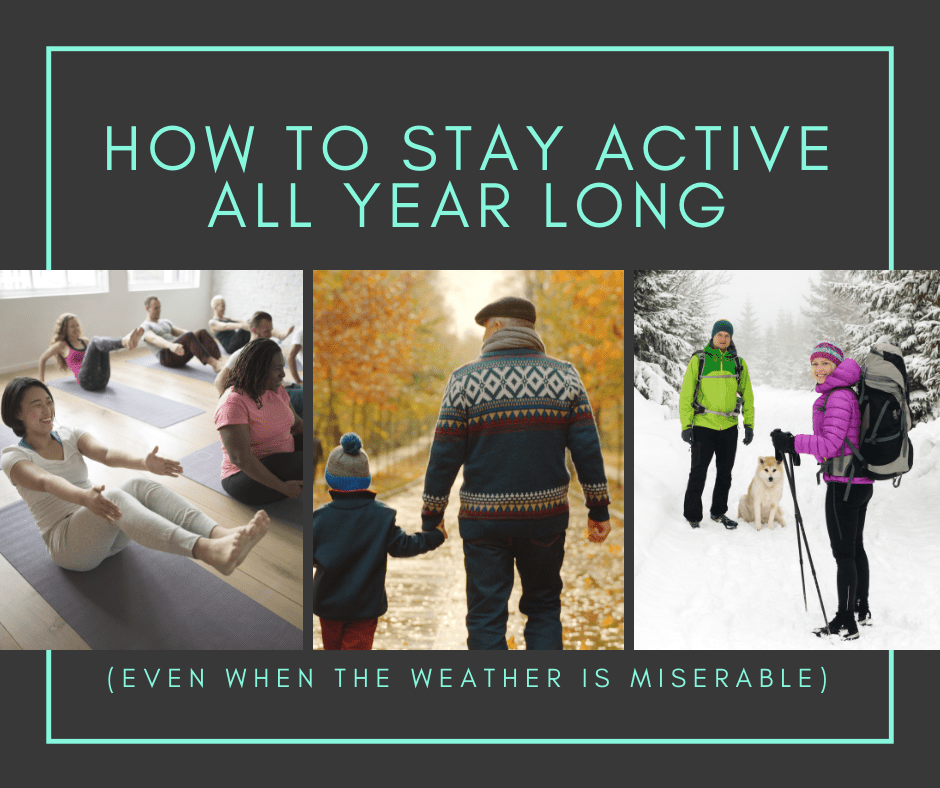Let’s be honest; no matter what our commitments to keeping active are, the weather outside can have some powerful vetoing powers on those plans. In fact, it’s not uncommon for people to find themselves passing up their regular walk around the block in favour of avoiding cold or nasty weather. Unfortunately, trading out activity for catching up on Netflix is far from what the doctor orders.
Keeping exercise as a part of your routine is not only good for us. It’s necessary to maintain bone and joint health. In fact, regular activity is proven to help minimize the potential for strains and sprains, as well as help prevent degenerative bone, cartilage and joint diseases.
We connected with Dr. Judy Forrester, a chiropractor based in Calgary to gain some insight.
“Your bones and joints need the healthy stresses activity provides. Moving and using your joints keeps them lubricated It allows your bones to age gracefully. It even helps your body absorb and distribute dietary minerals.” Dr. Forrester explains.
“One of my very senior patients captured this idea with the phrase, ‘they can’t bury me if I keep on moving.’ In short, keeping active helps your bones stay healthier longer.”
But how do you balance staying active with avoiding cold or nasty weather?
Consider a Different Routine for Different Seasons
“Shifting into winter activities is about your mindset. You will be successful with staying active if you adapt your exercise routines to the season.” Says Dr. Forrester.
“Many people want to slow down in winter when instead, they can just switch to new routines. For example, if you’d rather avoid going outside, download your favourite yoga app or try the free stretching program at Straighten Up Alberta. You can even set up an in-home gym. They don’t have to be expensive; you just need some resistance bands and small weights.”
If you are going to go outside, Dr. Forrester recommends taking extra care to dress for the weather and the activity.
“Use layers you can shed or don to help maintain a steady, warm body temperature and with gradual warming up and cooling off. If it’s rainy or slippery outside, choose your footwear carefully to prevent falling.”
Find Out What Activities Best Suit You and Your Physical Capabilities
It is always a good idea to consult with a health care professional who is familiar with your physical capabilities when you’re starting a new routine or testing you physical abilities. Your chiropractor is one of your best resources for building physical activities and exercise regimes.
“No one knows your musculoskeletal system like your chiropractor. Chiropractors are also best-suited to understand the biomechanics of your body. If you’re a naturally flexible person, how so and in which joints? Do you like to swim? Do you prefer gyms? Pools? Arenas?” Dr. Forrester says.
Chiropractors know how to adjust and treat your body, and they know how to prescribe activities that will work with you instead of against you.
Tailor Your Workouts to Suit You
The most important thing you can do once you have an idea of what you can and want to do is to tailor your exercise for your needs.
“If you’re used to running or cycling during the summer months, you can easily adapt to winter weather with a treadmill or stationery bike. However, don’t forget to account for how the change in environment may affect your warm up, cool down and stretching regimes.”
“How often you should be exercising depends upon the individual and a variety of factors, from age to other existing health issues. I recommend a little exercise every day, as opposed to 2 or 3 times a week to my patients. This makes it more manageable to stay active and create a habit of exercise,” suggests Dr. Forrester.
And If All Else Fails…
“Stretch, stretch, stretch… did I mention stretch?”
If you take nothing else from this blog, this is the one thing Dr. Forrester wants you to remember.
“Stretching is the most important activity you can do for optimizing musculoskeletal health. When I teach patients stretches and they ask me how long they should do it for, my response is always ‘Every day for the rest of your life.’”
If it hurts, see a chiropractor.
Stretching and gentle exercise are great ways to stay active and decrease discomfort but sometimes it’s not enough. If your pain hasn’t subsided after a few days, seek advice from a chiropractor.
Chiropractors are highly educated and specially trained musculoskeletal experts. Your chiropractor can treat aches and pains, as well as build customized stretching routines and whole-body wellness strategies in conjunction with your chiropractic treatment. Consult with your chiropractor.
Additional Resources
How to Build the Perfect Home Gym

